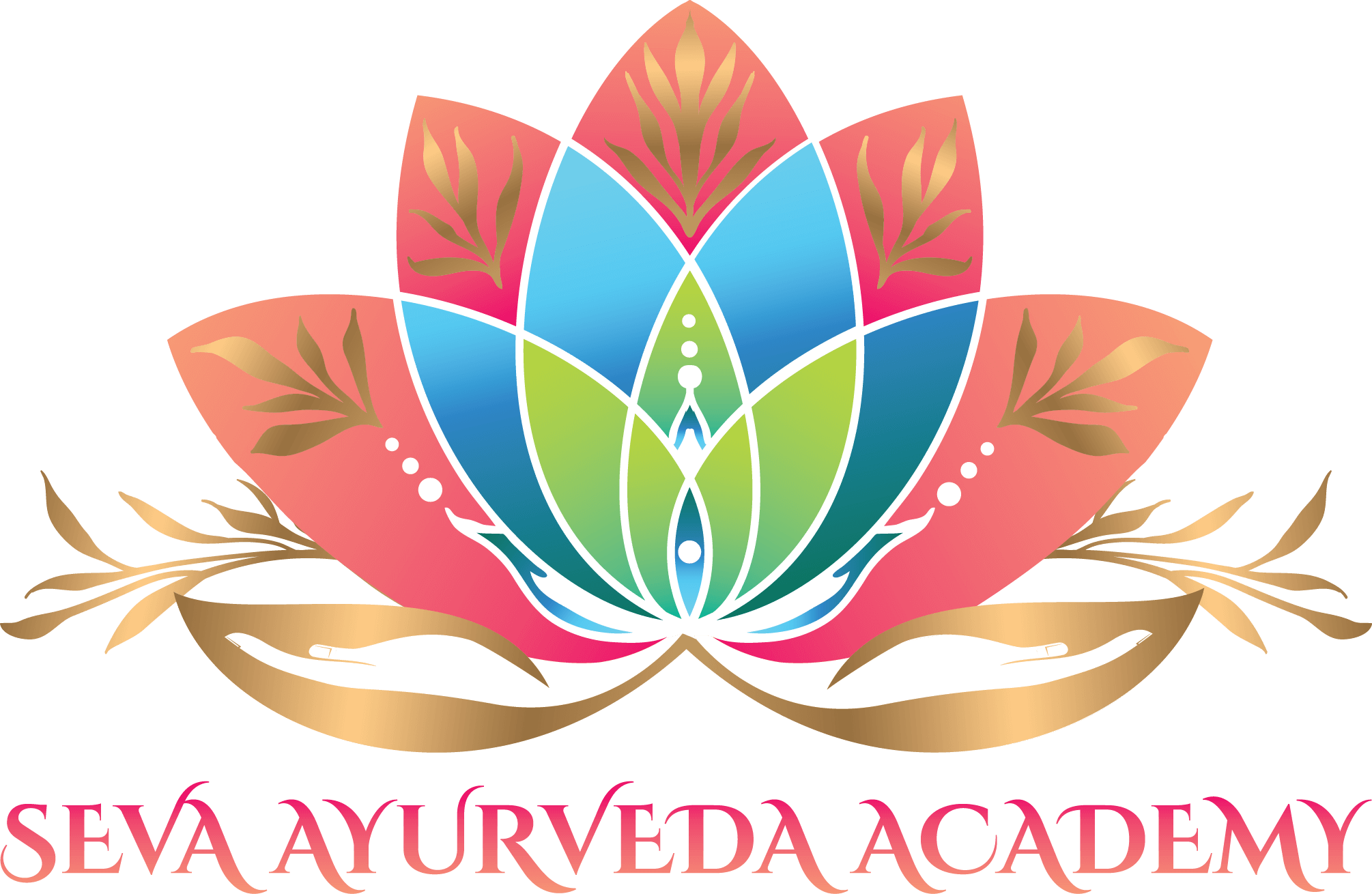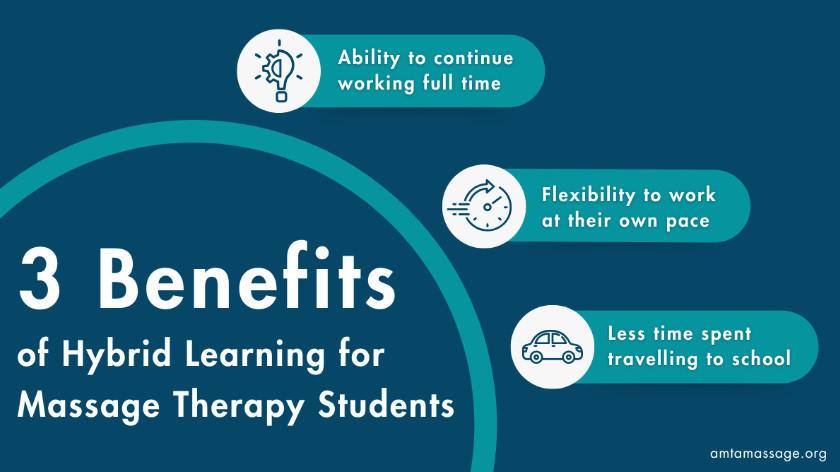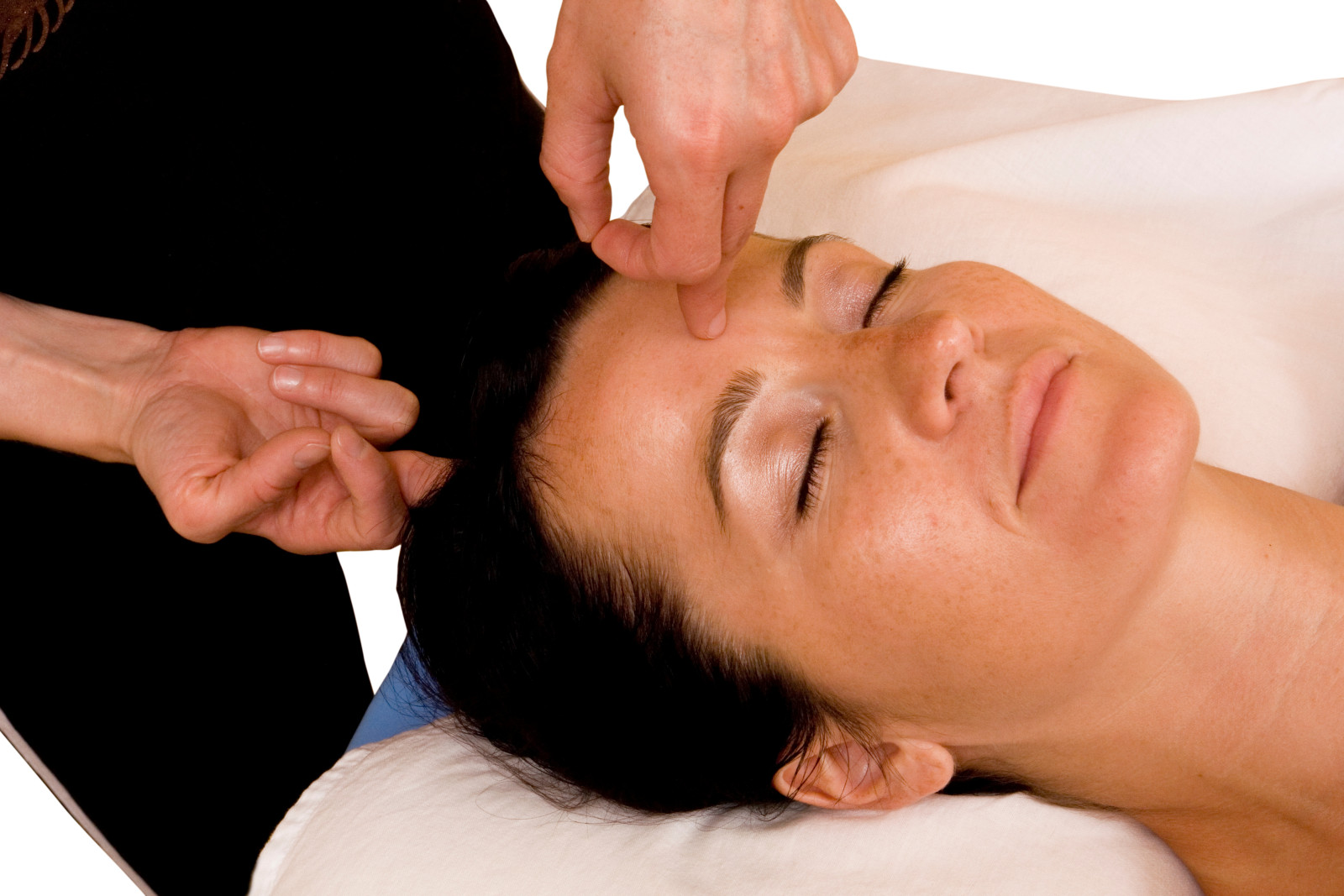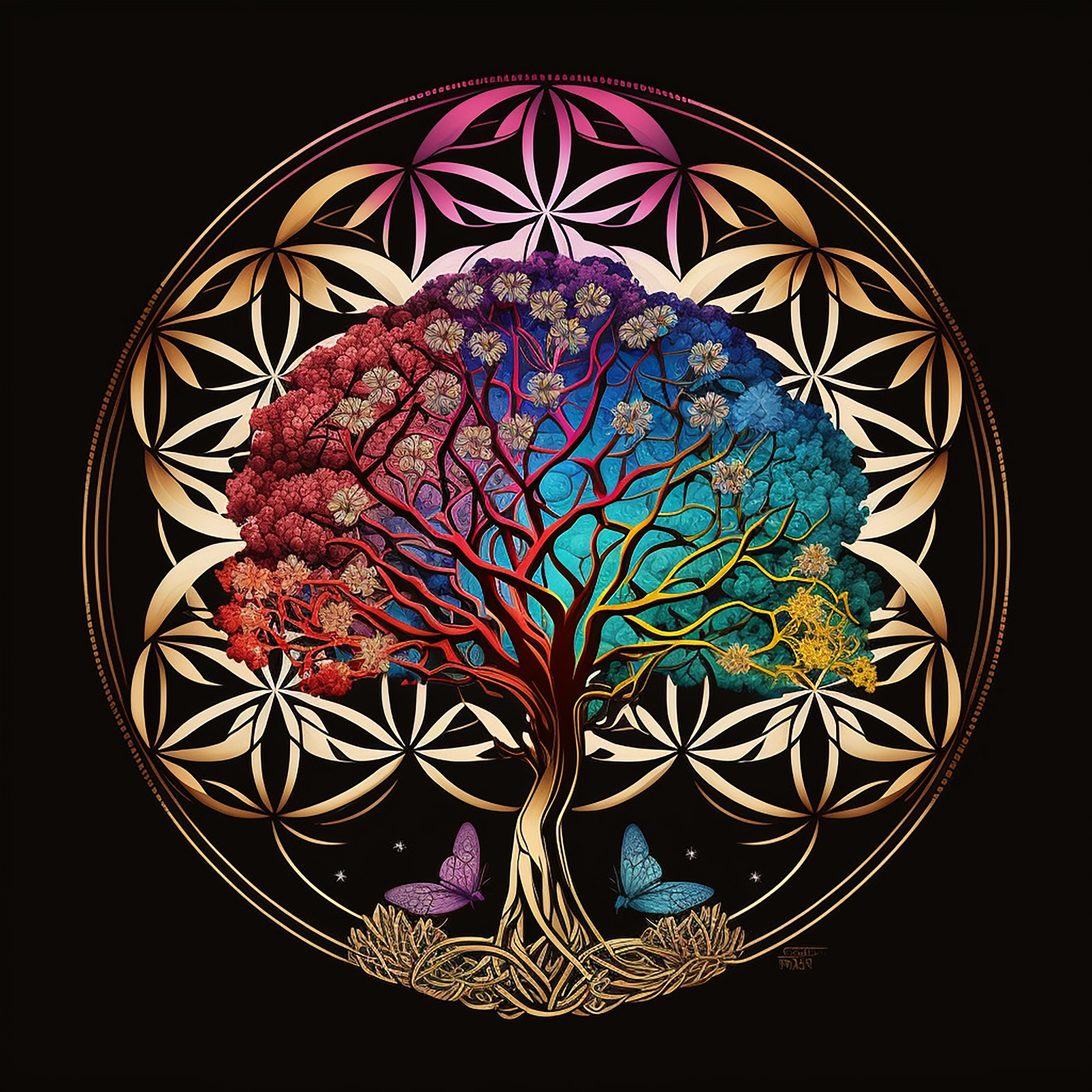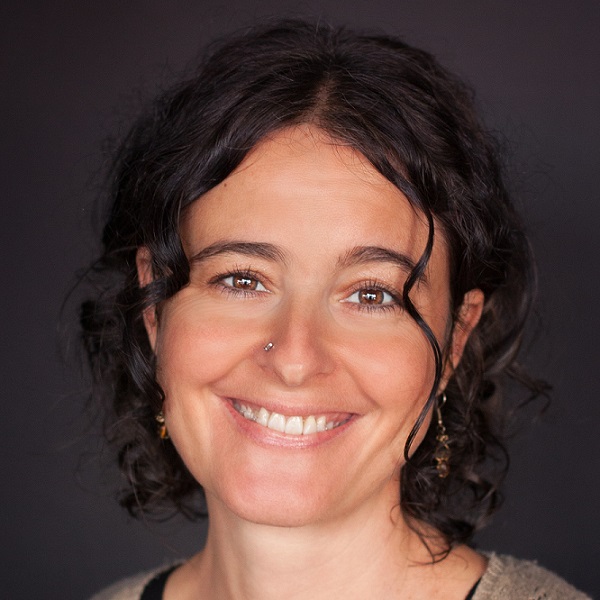The Current State of Hybrid Education in
Massage Therapy
Online learning appears here to stay, but does it work for entry-level education?
Our research indicates that numerous massage therapy schools have successfully integrated hybrid learning models into their curriculum, adapting to evolving student needs while maintaining high educational standards.
"The current state of massage therapy education is experiencing a notable shift toward more adaptable and accelerated learning formats," explains Kathleen Mazy, who owns Texas Massage Academy. "This transformation is primarily driven by students seeking flexible massage therapy certification options that accommodate their busy schedules."
Consider a typical 600-hour massage therapy program, traditionally completed in six to twelve months. Many schools now offer theoretical components through online platforms while maintaining in-person sessions for hands-on training. This hybrid approach has made pursuing a career in massage therapy more accessible, opening new pathways for aspiring massage therapists to enter the field and explore various massage therapy jobs.
What Does the Data Say?
A comprehensive 2023 study investigated how online versus offline teaching methods impact medical students' cognitive abilities. The research collected survey data from entry-level students who participated in online teaching during 2018 and those who received offline instruction in 2019 at Xiangya School of Medicine, Central South University.
The researchers analyzed several metrics, including overall physiology final exam scores, performance in different question types, and student engagement with National Quality Open Courses across various score segments under both teaching models.
The findings revealed no statistically significant differences between online and offline teaching models regarding total scores, short-answer questions (SAQ), and case study questions (CSQ). Interestingly, students performed better on multiple choice questions (MCQ) in the online teaching format.
The study also found that students with lower academic performance
achieved higher total scores in both MCQ and CSQ categories when learning online. The researchers concluded that online instruction was comparable to offline teaching in cognitive domains and proved more effective for developing lower-order cognitive skills. However, they noted that traditional offline instruction might better serve high-achieving students in developing advanced cognitive abilities.
Another 2023 study examined the effectiveness of blended (hybrid) learning compared to purely online or offline approaches in an evidence-based medicine course. This research evaluated examination scores from 2,100 undergraduate clinical medicine students across three groups: blended learning, online-only, and traditional offline instruction.
The results demonstrated significantly higher exam scores and pass rates among students in the blended learning group compared to both online-only and offline groups. Furthermore, when surveyed about their preferences, 71.6% of students favored the blended teaching approach. The researchers noted, "Implementing a blended education strategy in evidence-based medicine courses enhances students' learning motivation, independence, and overall satisfaction."
Hybrid Learning for Entry-Level Massage Therapy Education
One of the most challenging aspects of hybrid learning is its integration into entry-level massage therapy education. Since this foundational training forms the cornerstone upon which massage therapists build their entire careers, ensuring the effectiveness of a hybrid model becomes paramount.
"A well-structured hybrid model can effectively serve entry-level massage therapy education when thoughtfully implemented," explains Davonna Willis, who founded 4 Nineteen Education & Training. "While theoretical components like anatomy studies or business management courses can be successfully delivered online, the hands-on aspects of massage therapy require substantial in-person training to develop essential tactile skills and professional confidence."
Mazy suggests that in certain scenarios, a hybrid model might actually surpass traditional learning approaches. "Our massage therapy school program gives students the unique advantage of revisiting concepts they might have missed initially. Unlike traditional classroom settings, our online platform offers the ability to review material multiple times," she explains. "During on-campus sessions, we facilitate in-depth discussions about previously covered online material, providing students additional opportunities to deepen their understanding."A well-structured hybrid model can effectively serve entry-level massage therapy education when thoughtfully implemented.
— Davonna Willis
What are the Benefits of a Hybrid Learning Model for Massage Therapy?
For many students pursuing massage therapy jobs, balancing full-time employment with their education is a common challenge. The hybrid learning model proves invaluable in such situations. "Students maintaining full-time jobs while attending massage therapy school particularly benefit from this model, especially when studying science-based courses like anatomy," Willis notes.
Mazy emphasizes flexibility as another key advantage of hybrid learning in massage therapy education. "Our students appreciate the freedom to complete online coursework at their preferred pace," she explains. "Given our rural location, the hybrid model reduces campus commute time by half, making our massage therapy certification program more accessible."
The benefits extend beyond student convenience to impact massage therapy schools positively. "Hybrid education models can potentially boost enrollment numbers, which naturally strengthens the school's financial position," Willis observes.
As with any broad educational approach in massage therapy, the benefits of hybrid learning aren't universal. Different students pursuing massage therapy certification excel in varying learning environments. "Research, including my own studies, indicates that asynchronous learning particularly benefits students with consistently high academic performance," explains Susan Salvo, a respected author, educator, and massage therapy practitioner. "However, for average-performing students, live or synchronous learning environments typically yield better results."
Salvo further emphasizes that students who speak English as a second language or those with neurodivergent learning styles tend to achieve better outcomes in live, synchronous learning settings within massage therapy schools.
The Challenges of Hybrid Education
Some students find maintaining motivation more challenging in online learning environments. The self-paced nature of our programs can sometimes lead to procrastination or feelings of isolation.
To combat these challenges, Seva Ayurveda Academy has established a student community platform where learners can connect with peers pursuing similar massage therapy certification. Our hybrid model also includes regular live Q & A’s and discussions, ensuring students remain aware of available school resources and support.
Despite these obstacles, online components in massage therapy education appear to be a permanent fixture. Technology will play an increasingly vital role and for massage therapy schools to remain competitive and sustainable, they'll need to expand beyond traditional classroom lectures and incorporate additional educational tools, which we at Seva Ayurveda Academy are prepared to do.
Enhancing Your Massage Therapy Education with Marma Therapy
Incorporating marma therapy into your massage therapy education provides a unique perspective on holistic healing. As you delve into this ancient practice, you’ll discover a new dimension to your understanding of the human body and its energy systems.
To truly grasp the concepts of marma therapy, it’s essential to study the locations and functions of the 107 marma points. Each point has a specific purpose and is associated with particular physical and mental benefits.
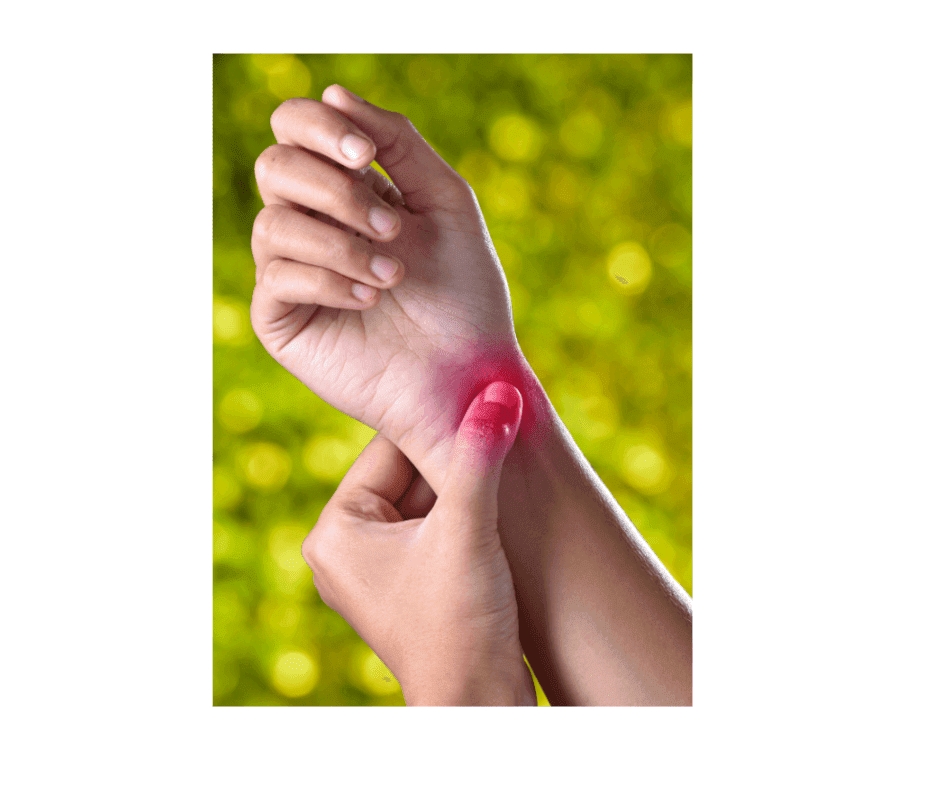
Hidden beneath your skin lies an intricate network of 107 vital energy points that ancient Indian healers discovered thousands of years ago. These points form the foundation of marma therapy, a powerful healing practice that has survived and thrived through centuries, and as a high demand service, there simply isn't enough therapists so we need inspired therapists!
Marma therapy combines precise touch, pressure, and energy work to unlock your body's natural healing abilities. As a specialized branch of Ayurvedic marma massage, this therapeutic approach addresses both physical ailments and emotional imbalances by targeting specific energy points throughout your body. Marma points can also be diagnostic tools for assessing body function. So understanding this subtle therapy can empower you even more for self care and client care.
Understanding the Ancient Science of Marma Therapy
The ancient science of marma therapy emerged from ancient India. Marma therapy's roots trace back to 4000 BC. Initially documented in ancient texts like the Sushruta Samhita, this healing art evolved into a sophisticated therapeutic system. The science was so valued that it earned the title of "half the knowledge of surgery" in Ayurvedic medicine.
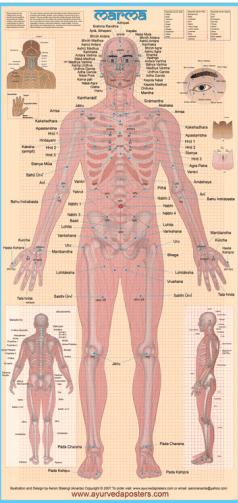
These points are classified based on their anatomical composition:
- Muscle and vessel intersections
- Bone and ligament junctions
- Nerve pathway convergences
- Organ and tissue connections
- Connection to Ayurvedic Principles
Marma therapy excels in managing various types of pain. The gentle manipulation of marma points helps release energy blockages, providing relief from musculoskeletal pain and joint issues. This therapeutic approach improves blood circulation and lymphatic drainage, supporting your body's natural healing processes. Studies show that marma therapy can effectively reduce chronic pain conditions while promoting tissue repair.
In today's fast-paced world, mental wellness is crucial. Marma therapy offers remarkable emotional benefits through its powerful ability to balance the nervous system. When specific marma points are stimulated, they trigger the release of neurochemicals like serotonin and melatonin, enhancing cognitive function and promoting better sleep.
The beauty of marma therapy also lies in its holistic approach - while addressing physical ailments, it simultaneously works on emotional and energetic levels. This integration of healing makes it particularly effective for those seeking a subtle and energetic approach.
The therapy has shown significant results in:
- Reducing anxiety and stress levels
- Improving emotional stability
- Enhancing mental clarity and focus
- Supporting better sleep patterns
- Energy Flow and Spiritual Wellness
Mastering marma therapy requires understanding both professional techniques and self-care practices. Making marma therapy a part of your daily wellness routine can amplify its healing benefits. Let's explore the essential methods and tools that make this ancient healing art effective in modern times.
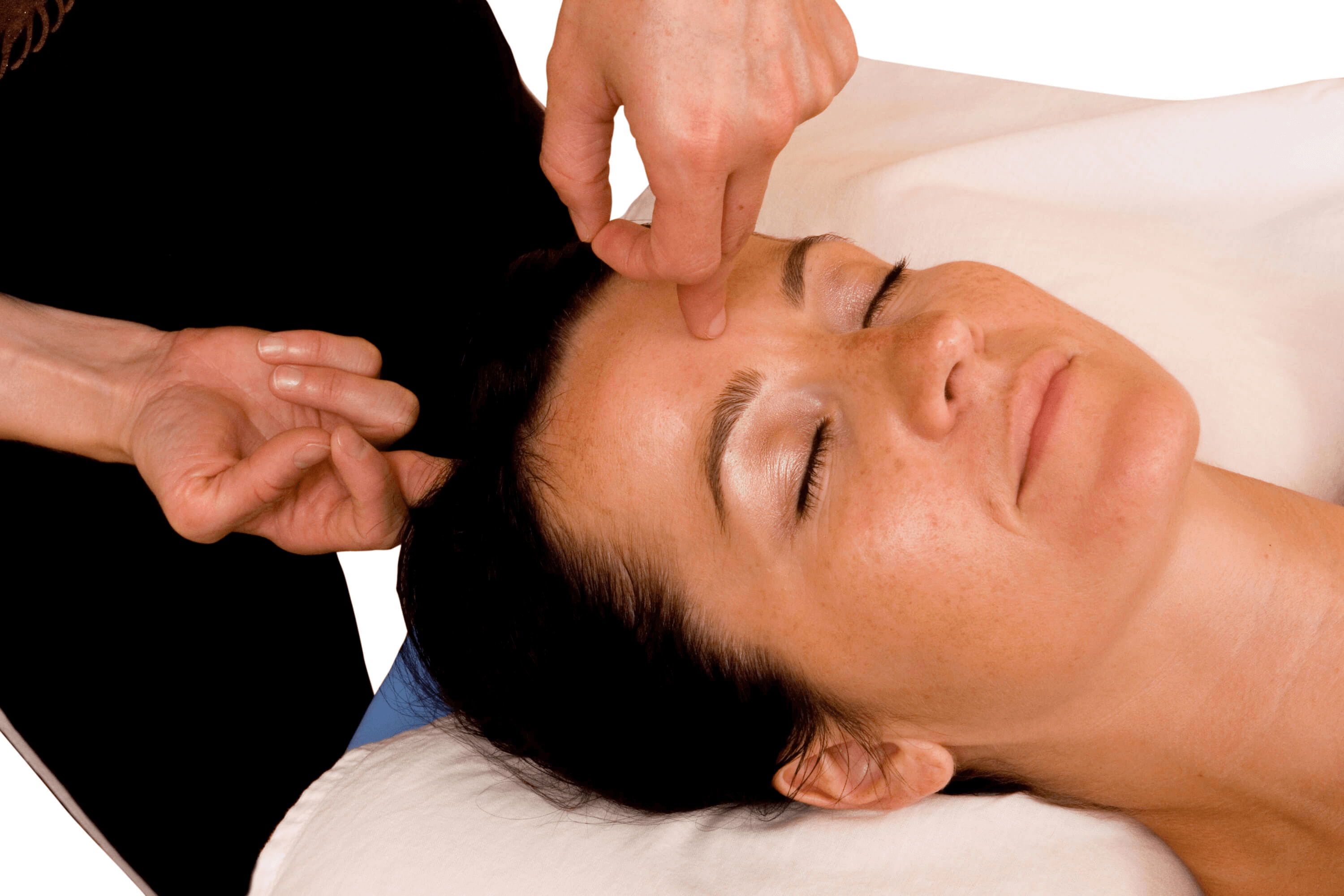
The effectiveness of marma therapy often relies on specialized tools and oils. The Marma Acupressure Stick, kansa wand or crystal wand, featuring both pointed and rounded tips, allows precise stimulation of energy points. Likewise, tools such as tuning forks, guasha, and moxibustion. Essential oils also play a crucial role in enhancing therapeutic effects.
A typical marma therapy session lasts about an hour on its own but can also be an “add on”, with treatments recommended weekly or as needed based on your condition
Marma therapy works beautifully alongside other wellness practices. It particularly complements:
- Massage Therapy
- Chiropractics
- Nurse Practitioner
- Yoga Therapists
- Physical Therapists
- Acupuncturists
- Naturopaths
- Yoga and meditation for enhanced energy flow
- Traditional Ayurvedic treatments
- Herbal medicine and dietary modifications
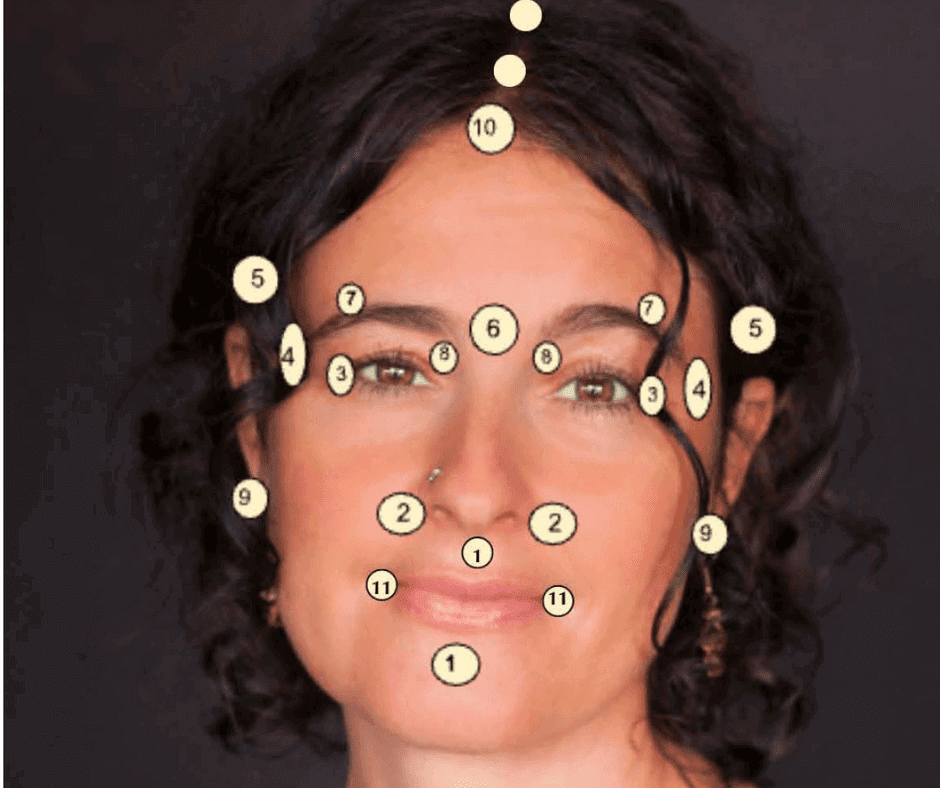 For self care, you can see the image here where I've mapped out all the facial points that you can work with. Try each one and notice your experience, build a relationship with the points by taking time to notice each one's therapeutic effect. By incorporating this practice into your routine, you're not just nurturing your skin, but harmonizing the flow of prana throughout your face body, promoting overall balance and vitality.
For self care, you can see the image here where I've mapped out all the facial points that you can work with. Try each one and notice your experience, build a relationship with the points by taking time to notice each one's therapeutic effect. By incorporating this practice into your routine, you're not just nurturing your skin, but harmonizing the flow of prana throughout your face body, promoting overall balance and vitality.Now, imagine being able to offer this transformative experience to your clients! Fulfill all your ceu's as a licensed massage therapist, or simply learn a new speciality and become an elite service provider for this high demand modality. Learn more about Marma Therapy Certification.
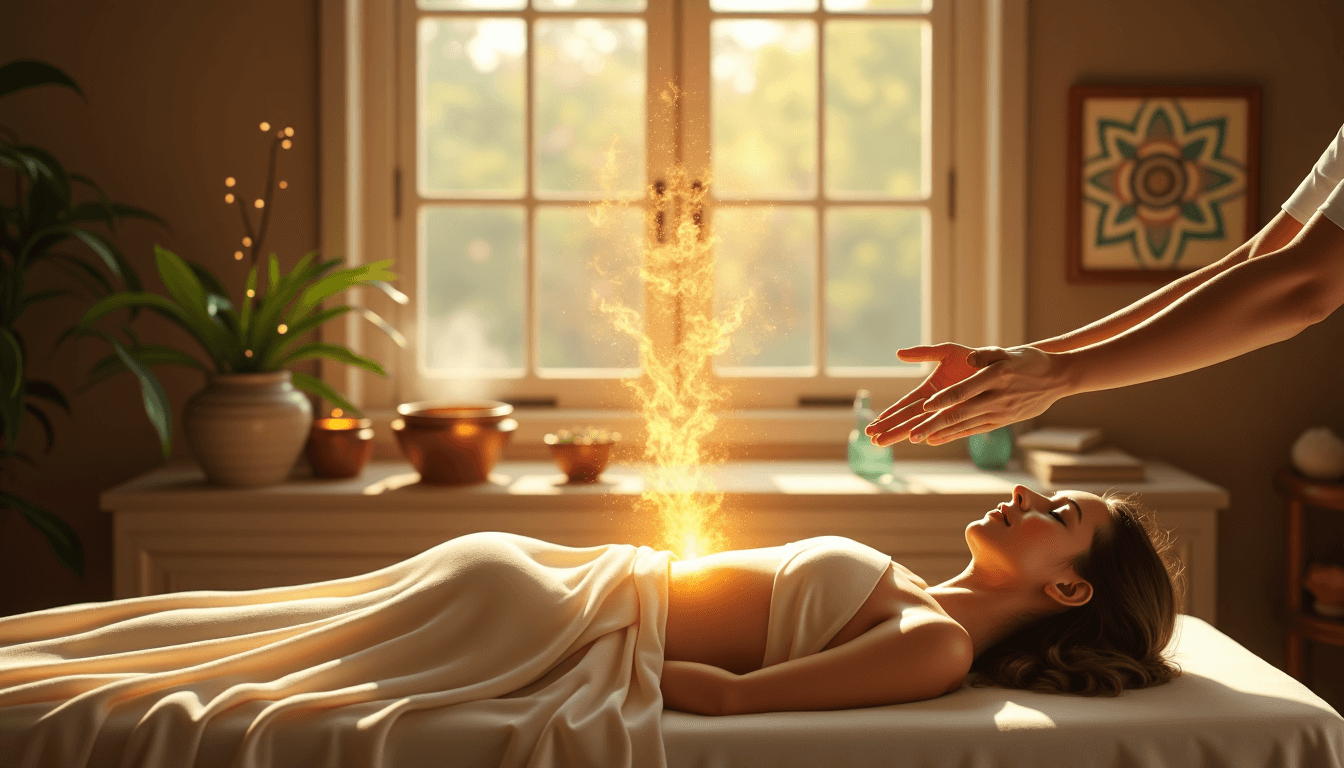 Image Source: AI Generated
Image Source: AI GeneratedThe quest for holistic healing has led many modern practitioners back to ancient wisdom. Polarity therapy, a comprehensive healing system developed in the mid-20th century, draws deeply from Ayurveda's 5,000-year-old principles of energy medicine.
This unique blend of Eastern and Western healing approaches offers a powerful framework for understanding the body's energy systems. Through its integration of Ayurvedic concepts like chakras, elements, and energy flow, polarity therapy provides a modern interpretation of time-tested healing wisdom.
In this article, we explore the fascinating connection between polarity therapy and Ayurveda, examining how ancient principles inform modern healing practices. We'll uncover the philosophical foundations, energy concepts, and practical applications that bridge these two powerful healing traditions.
The Ancient Roots of Polarity Therapy
At the heart of modern energy medicine lies a remarkable synthesis of healing wisdom, pioneered by Dr. Randolph Stone, a skilled practitioner of osteopathy, naturopathy, and chiropractic care [1]. His quest to understand the fundamental principles of healing would lead to the creation of polarity therapy, a system that bridges ancient Eastern wisdom with Western medical knowledge.
Origins in Ayurvedic Medicine
Dr. Stone's work began with a crucial observation: across different cultures and healing traditions, the concept of life energy remained central [1]. While this energy carried different names - chi, ki, or prana - its importance in maintaining health was universal. Stone noticed striking similarities between various healing systems, particularly in their understanding of energy flow and balance.
Dr. Stone's Journey to India
In 1955, Stone embarked on a transformative journey to India, spending six months studying and teaching in Bombay and Jalandhar [2]. This wasn't just a brief visit - he established a pattern of spending half of each year in India, immersing himself in the spiritual and healing traditions of the East [2]. His dedication to understanding Eastern wisdom led to his initiation into the Radha Soami Satsang Beas tradition in 1945 [3].
Integration of Eastern and Western Healing
Stone's genius lay in his ability to weave together diverse healing traditions. His background included:
- Western medical practices (osteopathy, chiropractic)
- Traditional Chinese medicine
- Ayurvedic principles
- Yogic practices
- Reflexology
This integration wasn't merely theoretical. Stone took the practical aspects of Ayurvedic marma points therapy and skillfully combined them with Western techniques like osteopathic spinal alignment and craniosacral therapy [4]. He believed that lasting healing required more than just mechanical manipulation of the body - it needed an understanding of the body's energy systems [4].
What made Stone's approach unique was his practical application of esoteric knowledge. He developed a comprehensive system that addressed not just physical symptoms but the underlying energy patterns that influence health [1]. His work showed that when there's proper energy flow, the body naturally moves toward balance and healing.
By the time he retired to India in 1974 [2], Stone had created a healing system that honored both the scientific precision of Western medicine and the energetic wisdom of Eastern traditions. His work continues to influence practitioners who seek to understand the deeper dimensions of healing.
Understanding the Five Elements
The five elements form the cornerstone of both Ayurvedic wisdom and polarity therapy's healing approach. These fundamental building blocks—ether, air, fire, water, and earth—create the foundation for understanding how energy moves through our bodies [5].
Elemental Theory in Ayurveda
In Ayurvedic tradition, these five elements are more than physical matter—they're the basic qualities that shape our existence [6]. Each element carries distinct characteristics:
- Ether (Space): Governs stillness, peace, and mental clarity
- Air: Controls movement, agility, and lightness
- Fire: Manages heat, vitality, and transformation
- Water: Influences flow, connections, and emotional balance
- Earth: Provides structure, stability, and grounding [7]
Application in Polarity Therapy
Polarity therapy uniquely interprets these elements through the lens of energy medicine. Each element corresponds to specific body functions and energy patterns [8]. The therapy recognizes that these elements are present in every cell of our body, working in harmony to maintain health [8].
In practice, polarity therapists work with these elemental energies through specific hand positions and therapeutic touches. As energy currents flow down the body, they create crossing points called chakras, each relating to different elemental qualities [5].
Balancing Elements for Healing
When elements become imbalanced, specific symptoms can emerge. For instance, a fire imbalance might manifest as digestive issues or inflammation, while an air imbalance could lead to nervous system disorders [4].
The beauty of polarity therapy lies in its practical approach to elemental balance. Through gentle bodywork, practitioners help release blocked energy patterns, allowing the elements to flow freely [4]. This process often reveals deeper emotional patterns—for example, unresolved resentments might manifest as a fire element disturbance, showing up as physical symptoms in the solar plexus area [4].
Understanding these elemental relationships helps practitioners and clients work together to restore balance. By becoming aware of how thoughts and feelings get stored in the body, individuals can release blockages and allow elemental energies to flow naturally, often leading to the spontaneous resolution of various symptoms [4].
The Three Gunas and Energy Principles
Deep within the heart of polarity therapy lies a profound understanding of the three universal energetic qualities known as the gunas. These fundamental forces, borrowed from Ayurvedic wisdom, shape how energy moves and transforms within our bodies.
Sattva, Rajas, and Tamas
The three gunas represent distinct qualities that influence our physical and mental well-being. Sattva embodies balance, wisdom, and harmony, representing the state of optimal health. Rajas manifests as action and movement, while Tamas represents inertia and stability [9]. These qualities aren't just philosophical concepts—they're practical tools for understanding how energy flows through our bodies.
Polarity's Interpretation
Polarity therapy uniquely translates these ancient principles into hands-on healing techniques. Practitioners use three distinct types of touch, each corresponding to a specific guna:
- Sattvic Touch: Light and gentle, creating openness and receptivity to healing
- Rajasic Touch: Stimulating and energizing, helping awaken blocked energy
- Tamasic Touch: Deep and dispersing, breaking up energy crystallizations [10]
This three-fold approach allows practitioners to work with energy in its different manifestations, adapting their touch based on the client's needs and the type of blockage being addressed [11].
Energy Flow and Balance
In polarity therapy, practitioners understand that energy moves in specific patterns—flowing outward from a neutral center (Sattva), expanding through active force (Rajas), and then returning through contracting energy (Tamas) [12]. This continuous cycle mirrors the natural rhythms of life itself.
When these energies become imbalanced, specific symptoms can emerge. For instance, excess Rajas might manifest as anxiety or restlessness, while predominant Tamas could lead to lethargy or stagnation [9]. Through skilled application of different touch techniques, polarity therapists help restore the natural flow and balance of these energetic qualities.
The beauty of this system lies in its holistic approach. Rather than just treating symptoms, practitioners work with these fundamental energetic principles to support the body's natural healing processes. By understanding how the gunas influence both physical and mental well-being, polarity therapy offers a sophisticated framework for addressing health challenges at their energetic source [11].
Chakras and Energy Centers
Energy centers known as chakras serve as vital hubs in the body's subtle energy system, forming a crucial bridge between physical and energetic healing. These powerful centers play a fundamental role in both Ayurvedic wisdom and polarity therapy's approach to wellness.
Ayurvedic Understanding of Chakras
The concept of chakras emerges from ancient traditions, where these energy centers are seen as connecting points for major nadis or energy channels [13]. While chakras belong to the subtle body rather than the physical form, their influence extends to both bodily and mental well-being. Interestingly, the original Sanskrit writings describe chakras not as fixed structures but as fluid manifestations of energy that can be activated through specific practices [13].
Polarity's Energy Mapping
Polarity therapy offers a unique interpretation of the chakra system, focusing primarily on five main energy centers aligned with the elements [14]. According to this framework, energy enters through the third-eye center before dividing into two distinct 'rivers' of energy:
- Positive charge: Flows along the right side of the body
- Negative charge: Moves through the left side
- Neutral zone: Creates balance between the two forces [5]
These energy currents cross at specific points, creating vortexes that correspond to the five elemental chakras. Each chakra resonates with its own unique vibration and frequency, constantly exchanging energy between positive, negative, and neutral poles [14].
Therapeutic Applications
In practical application, polarity therapy practitioners employ various techniques to balance and harmonize these energy centers. The approach combines:
- Bodywork: Using specific touch patterns ranging from light to deep pressure
- Movement: Incorporating gentle rocking motions
- Energy work: Applying reflexology and precise pressure points [14]
The therapeutic process aims to restore proper energy flow when blockages occur. When chakras become imbalanced, they can manifest as physical discomfort or emotional disturbances [15]. Through skilled application of polarity therapy techniques, practitioners help release these blockages, allowing energy to flow freely through the chakra system [16].
What makes polarity therapy's approach particularly effective is its integration with other healing modalities. The system combines craniosacral techniques with Ayurvedic concepts of elements and gunas, creating a comprehensive healing approach [14]. This integration allows practitioners to address both physical symptoms and their underlying energetic causes, supporting the body's natural healing processes.
Philosophical Foundations
Beyond the physical techniques and energy principles lies a profound philosophical framework that shapes polarity therapy's approach to healing. This unique system views wellness through a lens that encompasses both tangible and intangible aspects of human experience.
Spiritual Aspects of Healing
Polarity therapy practitioners create a sacred healing space through attentive listening and wisdom, supporting clients on their personal healing journey [17]. This approach goes beyond mere physical treatment—it's about facilitating a deep reconnection with one's inner self and vital life force. The practice draws inspiration from various wisdom traditions, recognizing that healing occurs on multiple levels simultaneously [18].
Mind-Body Connection
The relationship between mental state and physical health forms a cornerstone of polarity therapy. "As we think, so we are" became one of Dr. Stone's fundamental principles [19]. This understanding reveals how:
- Negative thoughts and reactions can manifest as physical ailments
- Mental attitude directly influences energy flow in the body
- Self-awareness leads to better health outcomes
Research suggests that changes in the human energy field can influence both disease progression and healing potential [1]. This insight has led practitioners to develop approaches that address both physical symptoms and their emotional roots.
Holistic Approach to Wellness
Polarity therapy stands out through its comprehensive framework that addresses four essential pillars of health [3]:
- Bodywork: Gentle touch techniques to release energy blockages
- Nutrition: Guidelines for maintaining energetic balance through diet
- Exercise: Specific movement patterns to enhance energy flow
- Counseling: Support for emotional and psychological well-being
This integrated approach recognizes that true healing requires attention to all aspects of human experience. The therapy aims to help individuals:
- Reconnect with Self: Facilitating a deeper understanding of one's vital nature
- Release Blockages: Addressing physical and emotional obstacles to wellness
- Restore Balance: Supporting natural health through energetic alignment [17]
What makes polarity therapy particularly effective is its emphasis on personal transformation. Rather than simply treating symptoms, practitioners work to realign the body with the soul, viewing physical conditions as reflections of deeper thoughts, beliefs, and emotional patterns [19]. This perspective encourages individuals to take an active role in their healing journey, fostering greater self-responsibility and improved self-esteem.
The practice acknowledges that life energy serves as the crucial link between mind and body. When this energy flows freely, it supports not only physical health but also emotional resilience and mental clarity. Through this understanding, polarity therapy offers tools for maintaining a balanced lifestyle, empowering individuals to participate actively in their healing process [19].
Conclusion
Polarity therapy stands as a remarkable bridge between ancient Ayurvedic wisdom and modern healing practices. This comprehensive system weaves together the profound understanding of elements, gunas, and chakras with practical therapeutic applications, creating a powerful framework for holistic wellness.
The beauty of polarity therapy lies in its ability to address health challenges at multiple levels - physical, emotional, and energetic. Through its unique interpretation of Ayurvedic principles, practitioners can help release energy blockages, restore natural balance, and support the body's innate healing abilities.
Dr. Stone's pioneering work continues to offer valuable insights for those seeking deeper healing. His integration of Eastern wisdom with Western medical knowledge proves that ancient principles remain relevant and effective in modern healthcare. The system he created provides practical tools for maintaining wellness while honoring the profound connection between body, mind, and spirit.
Are you inspired to learn the fundamentals of Polarity Therapy and Marma?? Learn More
References
[1] - https://www.wellnessinstitute.net/articles/detail/17
[2] - https://www.energyschool.com/drstonechronology
[3] - https://renewcraniosacraltherapy.com/polarity-therapy/
[4] - http://www.polaritywellness.co.uk/polarity-therapy-and-ayurveda/
[5] - https://polaritytherapy.com/five-elements
[6] - https://ayurhealing.net/blog/five-elements-of-ayurveda/
[7] - https://polaritytherapy.org/2017/12/02/healing-through-the-elements/
[8] - https://polaritytherapy.org/2020/07/21/cells-and-the-five-elements-a-polarity-perspective/
[9] - https://www.easyayurveda.com/2019/01/15/tridosha-satva-rajas-tamas/
[10] - http://www.garyauerbach.com/dga/Korn - Polarity Therapy for Dementia caregivers.pdf
[11] - https://www.polaritywellness.com/polarity-therapy
[12] - https://www.positivehealth.com/article/polarity-therapy/polarity-therapy-linking-ancient-knowledge-and-modern-physics
[13] - https://www.gersonayurveda.com/giam-blog/2019/1/6/ayurveda-and-the-chakras-by-scott-gerson-md-mphil-ayurveda-phd-ayurveda
[14] - https://soniradiance.com/polarity-therapy-chakra-balancing/
[15] - https://www.windowstotheheart.net/balancing-your-energy-flow-with-polarity-therapy/
[16] - https://polaritytherapy.org/2018/02/07/science-meets-energy-a-hands-on-guide-to-the-human-energy-field/
[17] - https://polaritytherapy.com/whatispolarity
[18] - https://amadeamorningstar.net/the-institute/
[19] - https://downtoearthbodyworks.com/polarity
[2] - https://www.energyschool.com/drstonechronology
[3] - https://renewcraniosacraltherapy.com/polarity-therapy/
[4] - http://www.polaritywellness.co.uk/polarity-therapy-and-ayurveda/
[5] - https://polaritytherapy.com/five-elements
[6] - https://ayurhealing.net/blog/five-elements-of-ayurveda/
[7] - https://polaritytherapy.org/2017/12/02/healing-through-the-elements/
[8] - https://polaritytherapy.org/2020/07/21/cells-and-the-five-elements-a-polarity-perspective/
[9] - https://www.easyayurveda.com/2019/01/15/tridosha-satva-rajas-tamas/
[10] - http://www.garyauerbach.com/dga/Korn - Polarity Therapy for Dementia caregivers.pdf
[11] - https://www.polaritywellness.com/polarity-therapy
[12] - https://www.positivehealth.com/article/polarity-therapy/polarity-therapy-linking-ancient-knowledge-and-modern-physics
[13] - https://www.gersonayurveda.com/giam-blog/2019/1/6/ayurveda-and-the-chakras-by-scott-gerson-md-mphil-ayurveda-phd-ayurveda
[14] - https://soniradiance.com/polarity-therapy-chakra-balancing/
[15] - https://www.windowstotheheart.net/balancing-your-energy-flow-with-polarity-therapy/
[16] - https://polaritytherapy.org/2018/02/07/science-meets-energy-a-hands-on-guide-to-the-human-energy-field/
[17] - https://polaritytherapy.com/whatispolarity
[18] - https://amadeamorningstar.net/the-institute/
[19] - https://downtoearthbodyworks.com/polarity
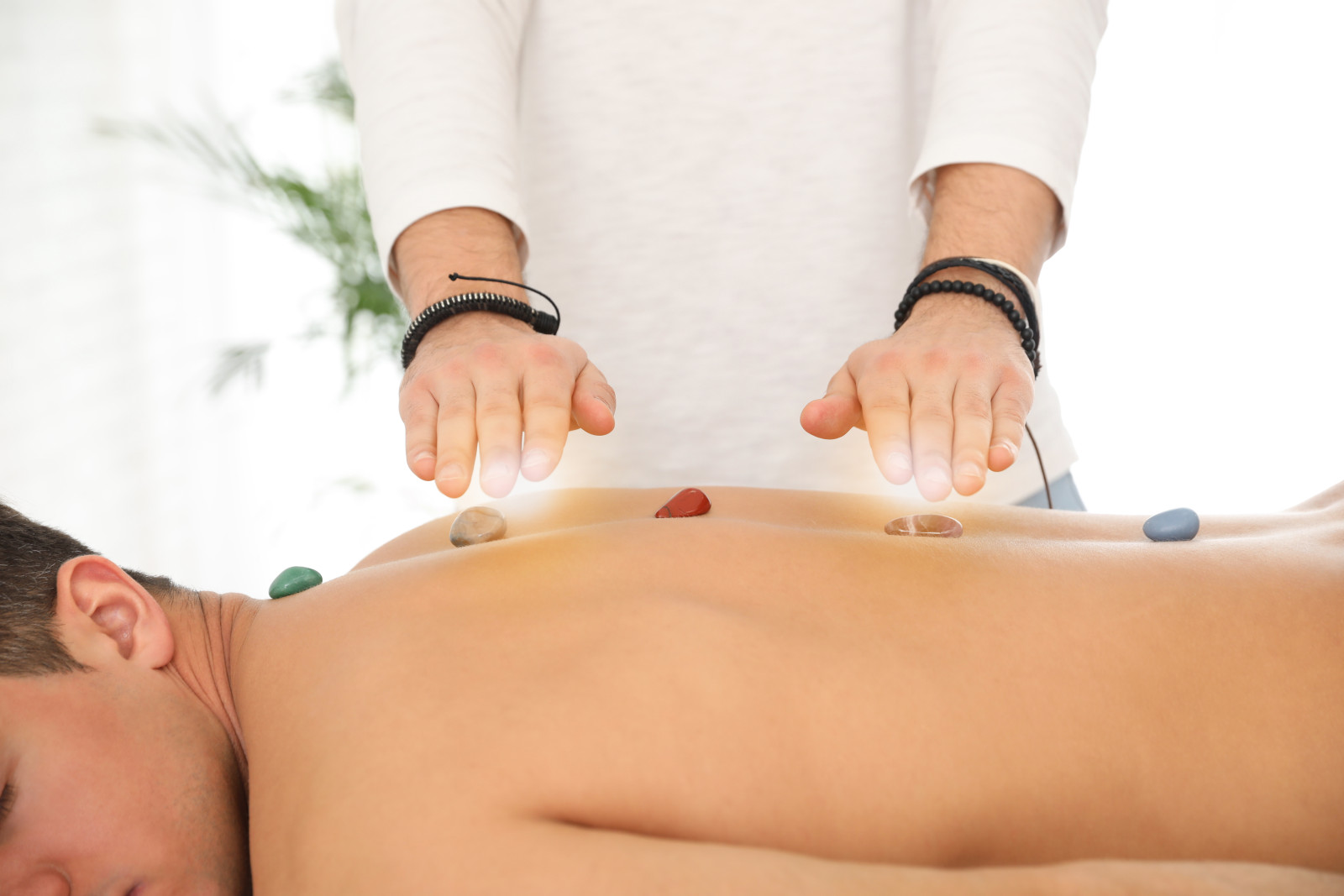
Welcome to the world of Polarity Therapy, where the power of touch and energy flow come together to promote holistic healing and balance. In this introduction, we will explore the principles and benefits of this unique and effective form of therapy.
Polarity Therapy is based on the belief that energy flows through our bodies in specific patterns and can become imbalanced, leading to physical, emotional, and mental dis-ease. By identifying and addressing these energy blockages, Polarity Therapy aims to restore harmony and vitality.
With a focus on accessing and enhancing the body's natural energy fields, Polarity Therapy incorporates a combination of bodywork, energetic techniques, and nutritional guidance. Practitioners use gentle touch, pressure, and manipulation to release tension, promote relaxation, and stimulate the body's natural healing abilities.
The benefits of Polarity Therapy are vast and may include reduced pain and stress, increased energy and vitality, improved digestion and sleep, and enhanced overall well-being. This therapy aims to not only alleviate symptoms but also address the root causes of imbalance.
Whether you're new to energy healing or seeking alternative approaches to wellness, Polarity Therapy offers a gentle yet powerful path to restoring harmony and promoting optimal health. With its holistic approach and emphasis on energy flow, this therapy is a valuable tool in today's fast-paced world.
What is Polarity Therapy?
Polarity Therapy is a holistic healing system that emphasizes the balance of energy flow in the human body. It integrates bodywork, diet, exercise, and self-awareness to support health and wellness. Developed in the early 20th century by Dr. Randolph Stone, Polarity Therapy combines Eastern medicine concepts with Western health science to offer a comprehensive approach to well-being.
The therapy is grounded in the understanding that life energy patterns exist within and around us, and that disease or discomfort can arise from energy imbalances. Through various techniques, including soft touch, stretching, and verbal guidance, practitioners aim to balance the body's energy flow.
Polarity Therapy views the human being as a complex of energetic fields that interact with the physical and mental aspects of the individual. By addressing not just the symptom but the source of imbalance, it provides a path to lasting health and vitality.
The History and Origins of Polarity Therapy
The roots of Polarity Therapy trace back to the comprehensive work of Dr. Randolph Stone, who was a chiropractor, osteopath, and naturopath. Dr. Stone spent his life studying the body's subtle energies and their influence on health, drawing knowledge from traditional Indian Ayurvedic medicine, Chinese medicine, and ancient Egyptian health practices.
He observed that health issues stem from energy blockages within the body and that restoring energy flow could heal these ailments. After decades of research and practice, Dr. Stone developed Polarity Therapy in the 1940s as a synthesis of his learning and experiences.
The legacy of Dr. Stone's work is a therapeutic practice that transcends cultural and historical boundaries, offering a universal approach to health and healing that is as relevant today as it was during its inception.
The Principles of Polarity Therapy
Polarity Therapy is based on five fundamental principles: the five elements (Ether, Air, Fire, Water, and Earth), three principles of energy (positive, negative, and neutral), energy fields and centers, energy pathways, and the processes of energy exchange and balance.
These principles help to understand how energy moves and interacts within the body and the universe. They guide practitioners in their approach to treatment, enabling them to identify imbalances and facilitate the body's innate healing capability.
By recognizing the interconnectedness of all life and the importance of balance in health, these principles form the foundation of Polarity Therapy's holistic approach.
The Energy Systems in Polarity Therapy
Polarity Therapy identifies three primary energy systems within the body: the Long Line Currents that run north to south in the body, the Transverse Currents that run east to west, and the Spiral Currents that move in circular patterns. These systems represent the pathways through which life energy flows and interacts.
Disruptions or blockages in these energy flows can lead to physical, emotional, or mental health issues. By working with these systems, practitioners aim to restore balance and facilitate the body's natural healing processes.
Understanding these energy systems allows therapists to apply specific techniques tailored to each individual's needs, offering a personalized approach to wellness.
Benefits of Polarity Therapy
The benefits of Polarity Therapy are wide-ranging and can impact every aspect of an individual's health. It can help reduce stress and anxiety, alleviate pain, improve digestion and circulation, boost the immune system, and enhance overall energy and vitality.
By fostering a deep sense of relaxation, Polarity Therapy can also promote mental and emotional well-being, helping individuals to manage emotions more effectively and gain a clearer, more balanced perspective.
Moreover, because Polarity Therapy addresses the root causes of imbalance rather than just symptoms, it can lead to long-term health improvements and a greater sense of harmony in life.
Polarity Therapy Techniques and Practices
Polarity Therapy incorporates a diverse range of techniques, including bodywork, stretching exercises, nutritional counseling, and verbal guidance. Bodywork involves gentle touch, rocking, stretching, and pressure to specific points to release tension and restore energy flow.
Practitioners may also recommend specific exercises and dietary adjustments to support the individual's overall health and energy balance. These practices are designed to empower individuals to take an active role in their healing process.
Additionally, Polarity Therapy emphasizes the importance of awareness and mindfulness in understanding one's energy patterns and cultivating a balanced lifestyle.
Polarity Therapy and Holistic Health
Polarity Therapy is a key component of holistic health, which considers the whole person — body, mind, and spirit — in the pursuit of optimal health and wellness. By integrating physical, emotional, and energetic aspects, Polarity Therapy offers a comprehensive approach to healing.
It complements other holistic practices and can be used alongside conventional medical treatments to enhance well-being. This integrative approach ensures that individuals receive personalized care tailored to their unique needs and circumstances.
In today's fast-paced world, where stress and imbalance are common, Polarity Therapy provides a vital tool for maintaining health, preventing illness, and achieving a higher quality of life.
How to Become a Polarity Therapy Practitioner
For those passionate about holistic health and healing, adding Polarity Therapy to your services can be a rewarding career path that makes a positive impact on the lives of others.
Conclusion: The Future of Polarity Therapy
As awareness of holistic and energy medicine grows, Polarity Therapy is poised to play an increasingly significant role in the field of health and wellness. With its comprehensive approach to healing and emphasis on balance and harmony, Polarity Therapy offers a powerful tool for addressing the complexities of modern life.
Whether you're exploring energy healing for the first time or are a seasoned practitioner, Polarity Therapy offers a path to deeper health, well-being, and vitality. Embracing the principles and practices of Polarity Therapy can lead to transformative changes, not just in physical health, but in every aspect of life.
Curious about courses in Polarity and Marma Therapy?? Become specialized in this unique modality that is in high demand.
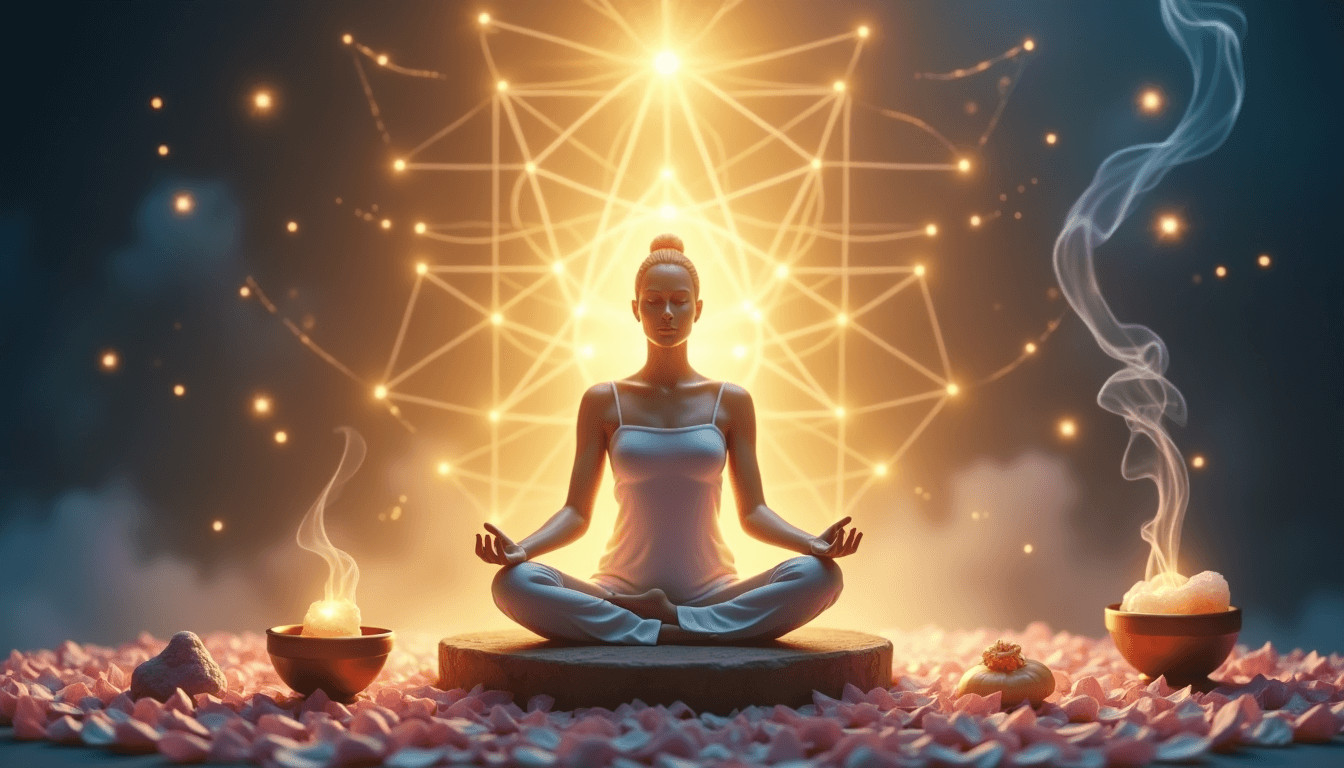
Hidden beneath your skin lies an intricate network of 107 vital energy points that ancient Indian healers discovered thousands of years ago. These points form the foundation of marma therapy, a powerful healing practice that has survived and thrived through centuries.
Marma therapy combines precise touch, pressure, and energy work to unlock your body's natural healing abilities. As a specialized branch of Ayurvedic marma massage, this therapeutic approach addresses both physical ailments and emotional imbalances by targeting specific energy points throughout your body.
This comprehensive guide explores the principles, benefits, and practical applications of marma therapy. You'll discover how to incorporate this ancient healing system into your modern wellness routine, whether through professional treatments or self-practice techniques.
Understanding the Ancient Science of Marma Therapy
The ancient science of marma therapy emerged from an unexpected source - the battlefields of ancient India. Warriors and physicians developed this knowledge not just for combat but also for healing 1. This dual nature of marma points - their potential to both harm and heal - makes them uniquely powerful in Ayurvedic medicine.
Origins and Evolution of Marma Therapy
Marma therapy's roots trace back to 4000 BC in the Vedic period 1. Initially documented in ancient texts like the Sushruta Samhita, this healing art evolved from martial knowledge into a sophisticated therapeutic system. The science was so valued that it earned the title of "half the knowledge of surgery" in Ayurvedic medicine 2.
The 107 Vital Energy Points
The human body contains 107 marma points, each serving as a critical junction where various tissues converge 3. These points are classified based on their anatomical composition:
- Muscle and vessel intersections
- Bone and ligament junctions
- Nerve pathway convergences
- Organ and tissue connections
Connection to Ayurvedic Principles
Marma points function as cosmic switchboards connecting your inner and outer environments 4. They serve as pathways for prana (life force) through 72,000 energy channels called nadis 4. Each point influences specific aspects of physical and mental well-being, working in harmony with the three doshas - Vata, Pitta, and Kapha 5.
When these points are gently stimulated through therapeutic touch, they activate the body's natural healing mechanisms 3. This stimulation helps clear energy blockages, restore balance, and promote overall wellness. Modern practitioners use this ancient knowledge to address both physical ailments and emotional imbalances, making marma therapy a truly holistic healing approach.
Key Benefits and Healing Applications
The therapeutic power of marma therapy extends far beyond its ancient origins, offering a spectrum of benefits that address modern wellness challenges. Let's explore how this time-tested practice can enhance your physical, mental, and spiritual well-being.
Physical Healing and Pain Relief
Marma therapy excels in managing various types of physical discomfort. The gentle manipulation of marma points helps release energy blockages, providing relief from musculoskeletal pain and joint issues 6. This therapeutic approach improves blood circulation and lymphatic drainage, supporting your body's natural healing processes 7. Studies show that marma therapy can effectively reduce chronic pain conditions while promoting tissue repair 8.
Mental and Emotional Balance
In today's fast-paced world, mental wellness is crucial. Marma therapy offers remarkable emotional benefits through its calming techniques. When specific marma points are stimulated, they trigger the release of neurochemicals like serotonin and melatonin, enhancing cognitive function and promoting better sleep 8. The therapy has shown significant results in:
- Reducing anxiety and stress levels
- Improving emotional stability
- Enhancing mental clarity and focus
- Supporting better sleep patterns 9
Energy Flow and Spiritual Wellness
At its core, marma therapy works by balancing your body's vital energy (prana). This balance creates profound effects on overall wellness 10. The therapy helps remove energy blockages, much like clearing a dam in a river, allowing energy to flow naturally through your system 10. Regular sessions can boost your vitality, improve organ function, and enhance your body's natural healing abilities 7.
The beauty of marma therapy lies in its holistic approach - while addressing physical ailments, it simultaneously works on emotional and energetic levels. This integration of healing makes it particularly effective for those seeking comprehensive wellness solutions in our modern world.
Essential Marma Treatment Techniques
Mastering marma therapy requires understanding both professional techniques and self-care practices. Let's explore the essential methods and tools that make this ancient healing art effective in modern times.
Professional Therapy Methods
Professional marma therapy begins with creating a peaceful environment conducive to healing 11. Certified therapists use precise, gentle circular motions and light pressure to stimulate marma points 12. These treatments typically incorporate warm, medicated oils applied to specific areas including chakras and marma points 13. A professional session focuses on releasing blocked energy while promoting deep relaxation through careful manipulation of these vital points.
Self-Treatment Practices
You can practice basic marma therapy at home using simple techniques. Here's how to get started:
- Use fingertips to apply gentle clockwise circular motions
- Massage each point for 3-5 minutes 10
- Practice in a quiet space with warm hands
- Focus on your breathing during treatment
Tools and Oils Used in Marma Therapy
The effectiveness of marma therapy often relies on specialized tools and oils. The Marma Acupressure Stick, featuring both pointed and rounded tips, allows precise stimulation of energy points 14.
Essential oils play a crucial role in enhancing therapeutic effects. Popular options include:
- Vata-soothing oils: Warming and calming, featuring anise, cinnamon, and cedar 15
- Pitta-balancing oils: Cool and sweet, including rose, sandalwood, and mint 15
- Kapha-balancing oils: Light and stimulating, containing warming and spicy elements 15
These oils are typically combined with base carriers like sesame, almond, or coconut oil for optimal absorption 15. When selecting oils, practitioners often let clients sample different blends, following the principle that your preferred scent is usually the most beneficial for your body 16.
Integrating Marma Therapy into Daily Wellness
Making marma therapy a part of your daily wellness routine can amplify its healing benefits. Whether you're new to this ancient practice or looking to deepen your experience, here's how to create a sustainable approach to marma therapy.
Creating a Marma Treatment Schedule
A typical marma therapy session lasts about an hour, with treatments recommended weekly or as needed based on your condition 17. For optimal results, schedule your sessions 30 minutes after meals, allowing 20-25 rounds of gentle stimulation for each point 18. This timing helps maximize the therapy's effectiveness while ensuring your body is properly nourished.
Combining with Other Healing Practices
Marma therapy works beautifully alongside other wellness practices. It particularly complements:
- Yoga and meditation for enhanced energy flow
- Traditional Ayurvedic treatments
- Herbal medicine and dietary modifications 19
The combination of marma therapy with yoga is especially powerful, as yoga postures naturally align with marma points, creating a synergistic effect on your body's energy system 20.
Safety Guidelines and Precautions
Important Safety Considerations: Before starting marma therapy, be aware of these essential precautions 17:
- Avoid treatment if you have fever, recent fractures, or contagious skin conditions
- Consult your doctor first if you have heart disease, cancer, or varicose veins
- Pregnant women should work only with experienced practitioners
- Ensure your practitioner knows about any medications you're taking
For self-treatment, apply 6-8 pounds of pressure on marma points, being gentler on soft areas and firmer on hard areas 18. Remember that while some tenderness is normal, excessive pain indicates you should ease up on pressure.
When practiced mindfully, marma therapy can become a cornerstone of your daily wellness routine, offering both immediate relief and long-term benefits for your physical and emotional well-being.
Conclusion
Marma therapy stands as a remarkable bridge between ancient wisdom and modern wellness needs. This powerful healing system, built on the foundation of 107 vital energy points, offers a complete approach to health that addresses physical ailments while nurturing emotional and spiritual well-being.
Professional treatments and self-care practices make this ancient science accessible to everyone seeking natural healing solutions. Regular marma therapy sessions, whether through a certified practitioner or mindful self-practice, can lead to noticeable improvements in pain relief, stress reduction, and overall vitality.
Starting with gentle techniques and proper safety considerations, you can gradually build marma therapy into your wellness routine. Combined with complementary practices like yoga and meditation, this time-tested healing art becomes a powerful tool for maintaining balance in body, mind, and spirit.
Are you inspired to learn Marma Therapy?? Learn more here.
References
[1] - https://www.researchgate.net/publication/369742798_A_Historical_Review_on_Literature_of_Marma_Science_-_An_Ancient_Healing_Technique
[2] - https://www.wjpmr.com/download/article/110062023/1688090952.pdf
[3] - https://ayurda.com/blogs/ayurvedic-health/unlocking-vital-energy-the-power-of-marma-points-in-ayurveda?srsltid=AfmBOor66bf6TDxWjGpbrbfWOFiLllDCzWsw8pur7R3-NLXGUJ-6Dnes
[4] - https://marmatherapy.org/who-invented-marma-therapy/
[5] - https://www.balancespa.ae/blogs/exploring-the-roots-of-marma-therapy-in-ancient-ayurvedic-texts
[6] - https://www.netmeds.com/health-library/post/marma-therapy-what-is-it-types-and-benefits-to-promote-energy-flow-and-healing?srsltid=AfmBOorA58Y9kOTqDeVcJnarTgbBsPfu3Hhr29ZwaYRcwJ7gcPB6Hq1Z
[7] - https://ayurda.com/blogs/ayurvedic-health/unlocking-vital-energy-the-power-of-marma-points-in-ayurveda?srsltid=AfmBOoogdjJ_tKG_m2SRXoMyDWXFFvyapV8cqdMAtDLFG86m7Oq_Vtac
[8] - https://journals.lww.com/ayuh/fulltext/2022/09010/exploring_the_scientific_potential_of_marma.4.aspx
[9] - https://www.ayurvedacollege.net/blogs/the-spiritual-connection-how-marma-training-in-kerala-enhances-holistic-wellness
[10] - https://www.keralaayurveda.us/courses/blog/marma-101-the-oldest-touch-therapy-for-energy-healing/
[11] - https://www.netmeds.com/health-library/post/marma-therapy-what-is-it-types-and-benefits-to-promote-energy-flow-and-healing?srsltid=AfmBOoo7AXVAKv1QQh0tKvGjHCZT1NI_1kSdkuC-QkgKepv4lWmXxrlX
[12] - https://www.healthline.com/health/marma
[13] - https://www.ayurhitam.com/best-marma-chikitsa-in-us/
[14] - https://www.marmatraining.com/marma-products/marma-essentials-collection
[15] - https://marmatreatment.panchakarmacentre.co.uk/choosing-the-right-oil-for-sukshma-marma-therapy/
[16] - https://marmatherapy.org/essential-oils-in-marma-therapy/
[17] - https://drpalikuttysayurveda.com/health-reads/marma-chikitsa-a-guide-to-ayurvedic-vital-point-therapy
[18] - https://www.planetayurveda.com/library/marma-therapy/?srsltid=AfmBOooxahBeMkM7-EEzvegdq4gsiuZDd8jWv5Hv4L9_1vZM4fDkSM4G
[19] - https://www.bodhiholistichub.com/guides/natural-medicine/marma-therapy
[20] - https://www.wisdomlib.org/science/journal/world-journal-of-pharmaceutical-research/d/doc1376476.html
[2] - https://www.wjpmr.com/download/article/110062023/1688090952.pdf
[3] - https://ayurda.com/blogs/ayurvedic-health/unlocking-vital-energy-the-power-of-marma-points-in-ayurveda?srsltid=AfmBOor66bf6TDxWjGpbrbfWOFiLllDCzWsw8pur7R3-NLXGUJ-6Dnes
[4] - https://marmatherapy.org/who-invented-marma-therapy/
[5] - https://www.balancespa.ae/blogs/exploring-the-roots-of-marma-therapy-in-ancient-ayurvedic-texts
[6] - https://www.netmeds.com/health-library/post/marma-therapy-what-is-it-types-and-benefits-to-promote-energy-flow-and-healing?srsltid=AfmBOorA58Y9kOTqDeVcJnarTgbBsPfu3Hhr29ZwaYRcwJ7gcPB6Hq1Z
[7] - https://ayurda.com/blogs/ayurvedic-health/unlocking-vital-energy-the-power-of-marma-points-in-ayurveda?srsltid=AfmBOoogdjJ_tKG_m2SRXoMyDWXFFvyapV8cqdMAtDLFG86m7Oq_Vtac
[8] - https://journals.lww.com/ayuh/fulltext/2022/09010/exploring_the_scientific_potential_of_marma.4.aspx
[9] - https://www.ayurvedacollege.net/blogs/the-spiritual-connection-how-marma-training-in-kerala-enhances-holistic-wellness
[10] - https://www.keralaayurveda.us/courses/blog/marma-101-the-oldest-touch-therapy-for-energy-healing/
[11] - https://www.netmeds.com/health-library/post/marma-therapy-what-is-it-types-and-benefits-to-promote-energy-flow-and-healing?srsltid=AfmBOoo7AXVAKv1QQh0tKvGjHCZT1NI_1kSdkuC-QkgKepv4lWmXxrlX
[12] - https://www.healthline.com/health/marma
[13] - https://www.ayurhitam.com/best-marma-chikitsa-in-us/
[14] - https://www.marmatraining.com/marma-products/marma-essentials-collection
[15] - https://marmatreatment.panchakarmacentre.co.uk/choosing-the-right-oil-for-sukshma-marma-therapy/
[16] - https://marmatherapy.org/essential-oils-in-marma-therapy/
[17] - https://drpalikuttysayurveda.com/health-reads/marma-chikitsa-a-guide-to-ayurvedic-vital-point-therapy
[18] - https://www.planetayurveda.com/library/marma-therapy/?srsltid=AfmBOooxahBeMkM7-EEzvegdq4gsiuZDd8jWv5Hv4L9_1vZM4fDkSM4G
[19] - https://www.bodhiholistichub.com/guides/natural-medicine/marma-therapy
[20] - https://www.wisdomlib.org/science/journal/world-journal-of-pharmaceutical-research/d/doc1376476.html
